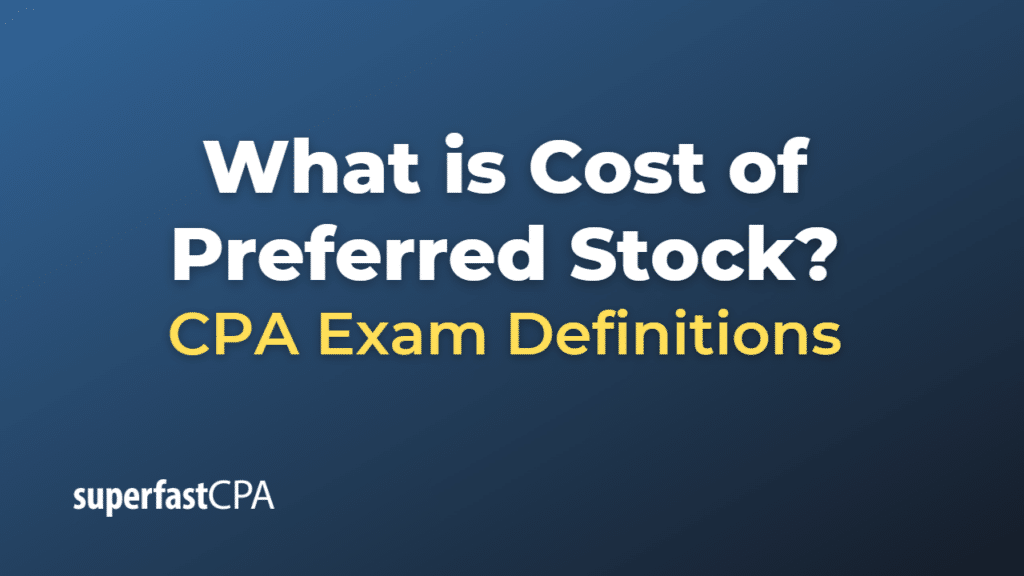Cost of Preferred Stock
The cost of preferred stock refers to the amount of return a company must pay to preferred shareholders in exchange for their investment. It’s essentially the price a company pays for using preferred equity as a source of capital.
The cost of preferred stock is calculated using the following formula:
\(\text{Cost of Preferred Stock} = \frac{\text{Dividends per share}}{\text{Market price per share}} \)
Where:
- Dividends per share: This is the fixed dividend rate multiplied by the par value of the preferred stock. It’s the amount of dividends a preferred shareholder receives each year.
- Market price per share: This is the current selling price of the preferred stock in the open market.
Example of Cost of Preferred Stock
Suppose Company XYZ has issued preferred stock with a par value of $50 per share. The preferred stock carries an annual dividend rate of 8%. Therefore, each year, the preferred shareholders receive dividends of $4 per share ($50 * 8%).
Now, let’s say the current market price of the preferred stock is $60 per share.
The cost of the preferred stock for Company XYZ would be calculated as follows:
\(\text{Cost of Preferred Stock} = \frac{\text{Dividends per share}}{\text{Market price per share}} \)
\(= \frac{\$4}{\$60} \)
\(\text{= 0.0667 or 6.67%} \)
Therefore, the cost of the preferred stock (the return required by preferred stockholders) for Company XYZ is 6.67%. This means that for every dollar Company XYZ raises by issuing preferred stock, it must pay 6.67 cents annually to its preferred shareholders in the form of dividends.













